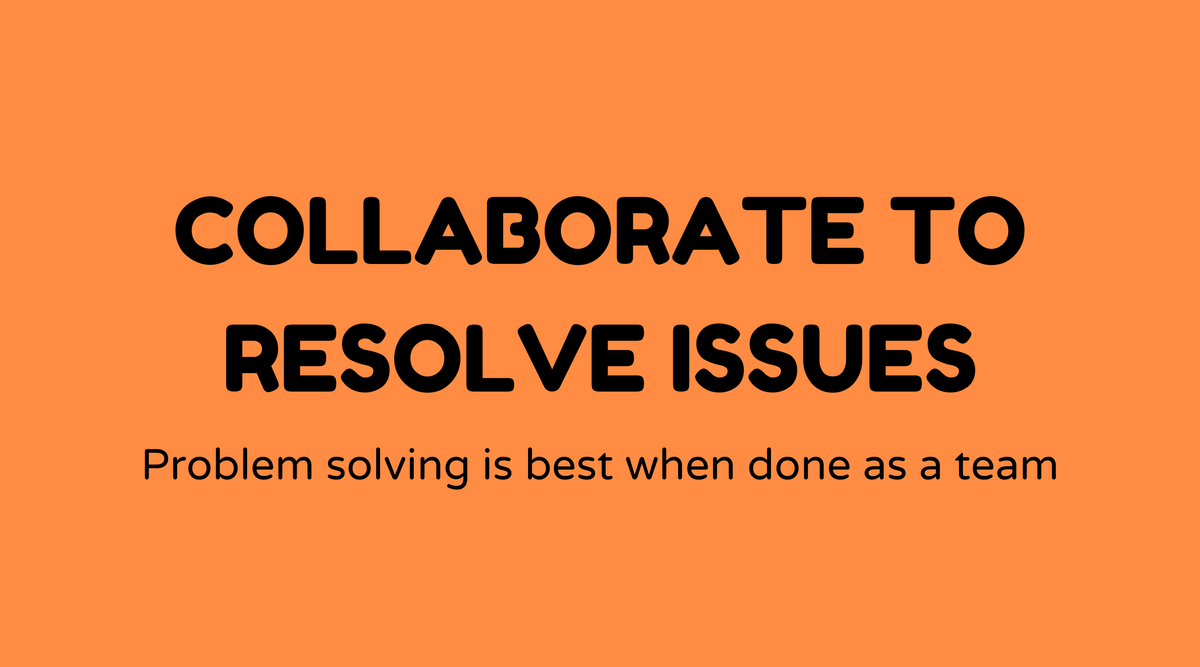Collaborate to resolve issues

Overview of Working Together to Address Challenges:
Teamwork is essential for effective problem-solving, particularly when it involves addressing challenges that emerge in any project or workplace. By joining forces, groups can tap into a variety of insights and skills to tackle obstacles more efficiently. This collaborative approach is not merely about gathering together; it focuses on a systematic and productive engagement with the issue at hand. Successful teamwork often thrives in a supportive setting, with clear communication and mutual respect among all participants.
Why Teamwork to Address Challenges is Important:
When we work together to tackle challenges, we create a synergy that frequently results in innovative solutions. This approach isn't just about distributing tasks; it enhances creativity by integrating diverse viewpoints. Teams that collaborate effectively can spot potential roadblocks early, ensure everyone is informed, and boost morale by instilling a sense of ownership and shared success. Furthermore, organizations that prioritize teamwork often see improved employee satisfaction and retention rates.
Understanding Working Together to Address Challenges:
At its essence, "working together to address challenges" involves forming a group—often with differing expertise—to confront a specific issue. This process includes recognizing the problem, appreciating various perspectives, brainstorming possible solutions, selecting the most suitable approach, and collectively implementing the resolution. Collaboration can take various forms, such as meetings, workshops, or online platforms, and may involve tools for communication, project organization, and document sharing.
How to Work Together to Address Challenges:
-
Identify the Issue: Begin by clearly defining the challenge. A precise understanding will guide the collaborative process.
-
Gather the Right Team: Assemble individuals with relevant expertise and a vested interest in the problem. Diversity in skills and perspectives will enrich the problem-solving journey.
-
Encourage Open Communication: Foster an environment where each team member feels comfortable sharing their ideas. This can be supported through brainstorming sessions or regular meetings.
-
Use Effective Tools: Utilize technology like Slack or Trello for communication and project management. Additionally, tools like Miro can facilitate visual collaboration.
-
Establish Clear Goals and Roles: Clearly outline the objectives and assign specific responsibilities to ensure accountability.
-
Brainstorm and Evaluate Solutions: Encourage creativity and consider all ideas before narrowing down the most promising solutions.
-
Implement and Monitor: Once a solution is identified, carry it out and closely monitor its impact to ensure it addresses the issue.
-
Reflect and Learn: After resolution, review the process to capture lessons learned and continuously enhance the collaborative experience.
Examples of Working Together to Address Challenges:
-
Tech Startups: A tech startup might encounter issues with product bugs. Collaborating across developer teams, UX/UI designers, and QA testers can lead to a comprehensive resolution more quickly than isolated efforts.
-
Healthcare Teams: In a hospital, interdisciplinary collaboration among doctors, nurses, and therapists can effectively tackle patient care challenges.
FAQs
-
What tools are effective for collaboration?
Digital tools like Slack, Trello, Zoom, and Miro improve communication and project organization. -
How can you encourage participation during collaboration?
Create a welcoming environment for sharing, acknowledge contributions, and actively involve quieter members. -
What are common barriers to successful collaboration?
Communication gaps, unclear objectives, and resistance to change can hinder teamwork. -
Can remote teams collaborate effectively to address challenges?
Yes, with the right tools and practices, remote teams can work together efficiently. -
Why is diversity important in collaborative teams?
Diversity offers varied perspectives that can lead to more innovative and effective problem-resolution. -
How does collaboration enhance creativity?
By involving different viewpoints and promoting open communication, teams can generate fresh, creative solutions to challenges.



